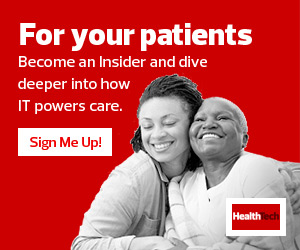What Is Predictive Analytics and Why Is It Critical?
Research firm Deloitte offers a straightforward definition: “Predictive analytics can be described as a branch of advanced analytics that is utilized in the making of predictions about unknown future events or activities that lead to decisions.”
Unlike prescriptive analytics, which uses data sets to help streamline existing processes and improve operational performance, predictive frameworks use machine learning and artificial intelligence models to discover correlations across disparate data sources and provide actionable recommendations.
As Phan says, the power of prediction with data analytics is especially critical in medicine. “Medical treatment is an art,” he says. “While there is science behind it, decision-making is an art. An AI-driven model can help support decisions for doctors — and not just the model itself but also the sensors and devices that help collect medical data.”
LEARN MORE: Find out how predictive analytics can improve care delivery.
Potential Use Cases in Healthcare
In practice, predictive analytics offers benefits across multiple use cases, such as:
- Improved patient outcomes. By integrating patient records with other health data, healthcare organizations can detect warning signs of serious medical events and proactively prevent their occurrence.
- Holistic health support. Evolving patient-centric models focus on the person as a whole rather than on outcomes in isolation. Predictive tools make it possible to collect and integrate lifestyle, symptom and treatment data to produce holistic treatment plans.
- Enhanced operations. Predictive tools can also be applied to internal healthcare processes such as equipment provision or staffing requirements to help lower overall costs.
- Personalized service provision. Care personalization has taken center stage as pandemic pressures evolve. Predictive tools make it possible to create truly personalized treatment plans tailored to unique patient needs.
Supporting Predictive Analytics in Healthcare
To deliver on the potential of predictive analytics, healthcare providers need a combination of tactics and technology.
For Phan, effective deployment starts with a problem statement: Where are providers missing key insight, and what data could help improve patient outcomes? “This should work similarly to the building of a computer model,” says Phan. “Develop some theories around how the problem could be addressed and then build out to one or many algorithms you’re going to implement.”
This ties into the second pillar of predictive analytics: Advanced ML and AI technologies. By supplying these tools with verified healthcare data, it’s possible to develop reliable and responsive models capable of analyzing incoming data to identify potential patient issues, improve current operations and predict emerging trends.
Phan notes, however, that this is a complex process. Organizations “must take their best models and run them through clinical studies to eliminate data that isn’t strong,” he says. In addition, data must be broken into specific subsets for training, testing and validation to ensure predictive factors aren’t weighted too heavily or too lightly in analysis outcomes.
MORE FROM HEALTHTECH: How predictive analytics helps healthcare organizations anticipate needs.
Reducing Potential Security Risks to Healthcare Organizations
Companies must also be aware of potential risks. For example, the Deloitte paper notes that regulatory guidance is still emerging around predictive analysis in healthcare, especially as applied to machine-driven interventions in patient-centered care; if predictive models make a mistake, who bears responsibility?
In addition, Phan points to more practical considerations around device control and security, including:
- Calibration. “When dealing with electronic sensors,” says Phan, “we need to deal with calibration and embedded software updates.” The Food and Drug Administration sets out rigid controls for medical device software upgrades.
- Access control. “Some of the most critical concerns are around access control,” says Phan. “Since predictive analytics requires the ongoing transmission and processing of data, you need controls around who can access that data.”
- Encryption. Strong encryption is also essential since, “at some point, data will need to be transmitted wirelessly or over the internet.” Unencrypted data could put both patient privacy and healthcare networks at risk.
- Data storage. Increasing data volumes make cloud storage the logical choice for healthcare organizations but, Phan says, emerging standards such as the European Union’s General Data Protection Regulation and the California Consumer Privacy Act may govern where this data can be stored and how it can be processed.












